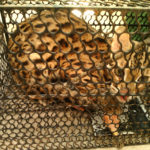Nowadays, pet ownership is not just a hobby, but also a way to express one’s class and wealth. Bengal cats are known to be one of the most expensive cat breeds in the world due to their distinctive leopard-like appearance.
To own a Bengal cat, one must spend a significant amount of money. If you also want to own one of these noble cats, don’t miss out on the following article.
1 What is a Bengal Cat?
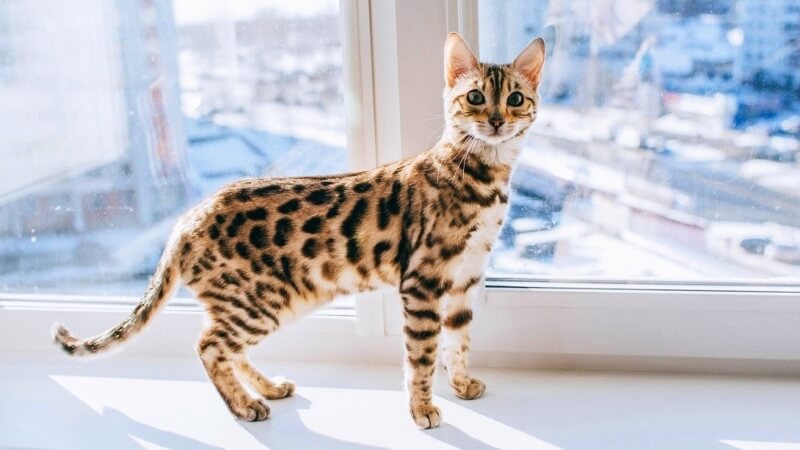 Bengal cat, also known as the leopard cat
Bengal cat, also known as the leopard cat
The Bengal cat, also known as the leopard cat, originated in the United States in the 19th century and is the result of crossbreeding between the Asian wildcat and the American domestic cat. The name “Bengal” is derived from the scientific name of the purebred Asian cat – Felis Bengalensis.
2 Physical Characteristics of Bengal Cats
Bengal cats have a muscular and robust build, with a long body, small legs, but large and thick paws similar to their ancestors. In contrast to their plump body, the head of the Bengal cat is slender and small. Their eyes are large, round, and usually a shimmering emerald green. The ears are large and erect. The tail is long and slender.
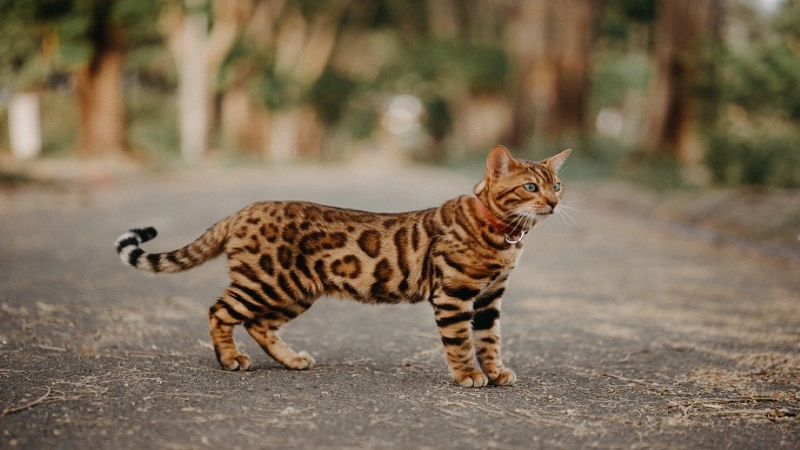
The unique feature that adds to the value of Bengal cats is their leopard-like coat pattern. The fur is short and very soft. There are three common colors: black marble, brown, and silver. However, through crossbreeding with other cat breeds to create gene mutations, Bengal cats can also have white or silver fur, but these colors are rare and the cats may not be as purebred.
When fully grown, Bengal cats can reach a length of 45 to 60 cm (excluding the tail) and weigh between 4 and 7 kg, specifically:
- Male Bengal cats weigh between 4.5 and 6.8 kg.
- Female Bengal cats weigh between 3.6 and 5.5 kg.
3 Personality Traits of Bengal Cats
Despite their wild origins, Bengal cats have been domesticated and are very affectionate. Like other cat breeds, Bengal cats enjoy being petted, cuddled, and played with by their owners. They are also friendly towards other animals and gentle when playing with young children.
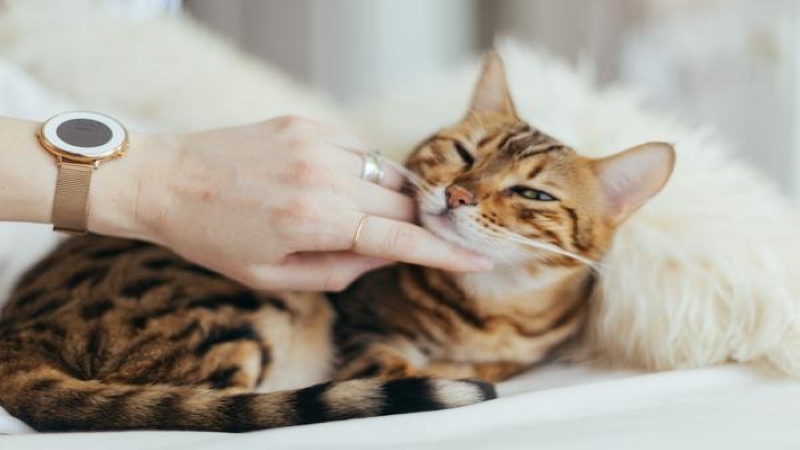
Inheriting traits from their wildcat ancestors, Bengal cats are very agile, intelligent, and tend to be mischievous at night.
Despite their fierce and unapproachable appearance, Bengal cats have a very intelligent, clever, and extremely affectionate personality.
4 Classification of Bengal Cats
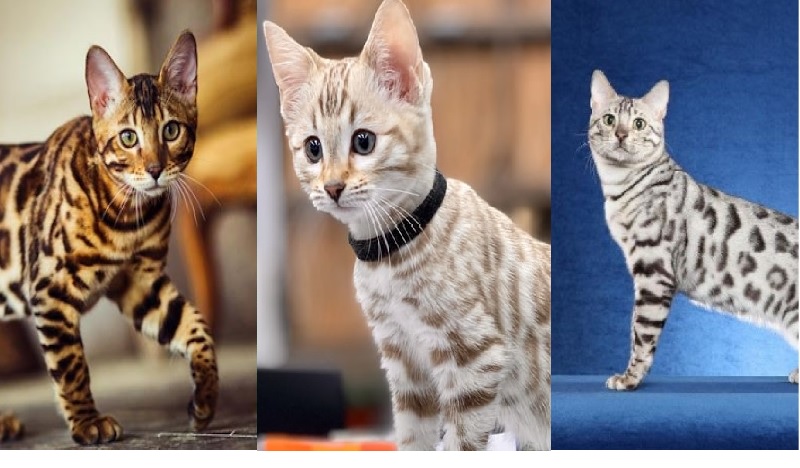
In the market, Bengal cats come in many colors, but only three colors are recognized by The International Cat Association (TICA): brown, white, and silver.
5 Bengal Cat Price and Where to Buy
 How much does a Bengal cat cost?
How much does a Bengal cat cost?
In Vietnam, Bengal cats are not common, so to own one, you need to spend a minimum of 7 million VND for a cat born in Vietnam.
For imported breeds, the price is higher, usually not less than $1000. The price also depends on the color of the fur, with rarer colors demanding a higher price.
Currently, in Vietnam, Bengal cats are quite rare, mainly found in the northern provinces like Hanoi. In Hanoi, you can refer to Dogily Petshop Tay Ho (209 Nuoc Phan Lan Street, Tay Ho District, Hanoi) for purchasing a Bengal cat, or if you are in Ho Chi Minh City, you can check out Dogily Petshop Phu Nhuan (63/14 Le Van Sy Street, Ward 13, Phu Nhuan District, Ho Chi Minh City).
6 How to Care for a Bengal Cat
What do Bengal Cats Eat?
Similar to other cat breeds, you can feed Bengal cats with a combination of wet and dry food, adjusting the portions according to their growth stage to avoid overweight issues.
In a daily meal for a Bengal cat, meat should make up about 80%. In addition to meat, it is necessary to supplement their diet with seafood such as salmon, cod, and dairy products like yogurt.
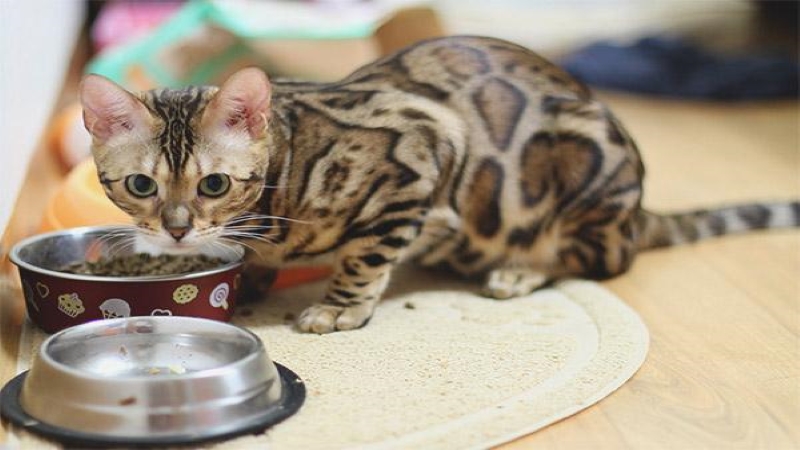
However, you should avoid feeding Bengal cats sugary foods, fish and chicken bones, and uncooked eggs, as they can affect their digestion. It is also important to regularly clean their eating utensils to ensure a healthy digestive system.
How to Keep Bengal Cats Active?
Bengal cats love climbing, so create a space for them to climb and explore, or they will find their own places to climb, which may not be to your liking. Install a cat tower near a window so they can climb up and observe the world outside for entertainment.
 and feline leukemia.
</p>
<p>
Therefore, it is advisable to have Bengal cats undergo regular health check-ups every six months to a year.
</p>
<h3>
<dropcaps>7</dropcaps>Should You Get a Bengal Cat?<br />
</h3>
<p>
<img decoding=) Bengal cats do not enjoy being alone
Bengal cats do not enjoy being alone
Bengal cats are beautiful, expensive, not picky eaters, and do not shed excessively. However, when considering getting a Bengal cat, you should take into account their personality traits and whether your living conditions are suitable, as not every cat breed is suitable for everyone. Specifically:
If your family has very young children, a Bengal cat may not be the best choice. Young children may unintentionally harm the cat, making it uncomfortable, and the cat may react negatively when feeling bullied.
If you are a busy person and don’t have much time to play with a Bengal cat daily, it is not advisable to get one. Bengal cats can get bored and destructive if left alone for extended periods as they are affectionate and crave attention. They do not enjoy being alone.
You should play with them or provide toys to keep them entertained and ensure they get enough daily exercise for their overall development.
In the 1960s in the United States, the crossbreeding of wildcats and domestic cats by Jean Mill and Dr. Wilard Centerwall resulted in the birth of leopard-spotted cats. These cats were named Bengal cats, derived from the scientific name of the Asian wildcat, Felis Bengalensis. In 1983, the Bengal cat was officially recognized by The International Cat Association (TICA)
I hope this article has provided you with valuable information about this unique cat breed, and I wish you luck in finding your perfect feline companion!
Capturing Rare African Wildcats in the Southwest Region
Representatives from the Vinh Long Provincial Forest Protection Department, the Environmental Police Department of the province, and the Community College met on the afternoon of January 27 to jointly discuss the transfer of rare African wildcat specimens to the preservation area of the Phu Quoc Investment and Tourism Development Company in Kien Giang.

























